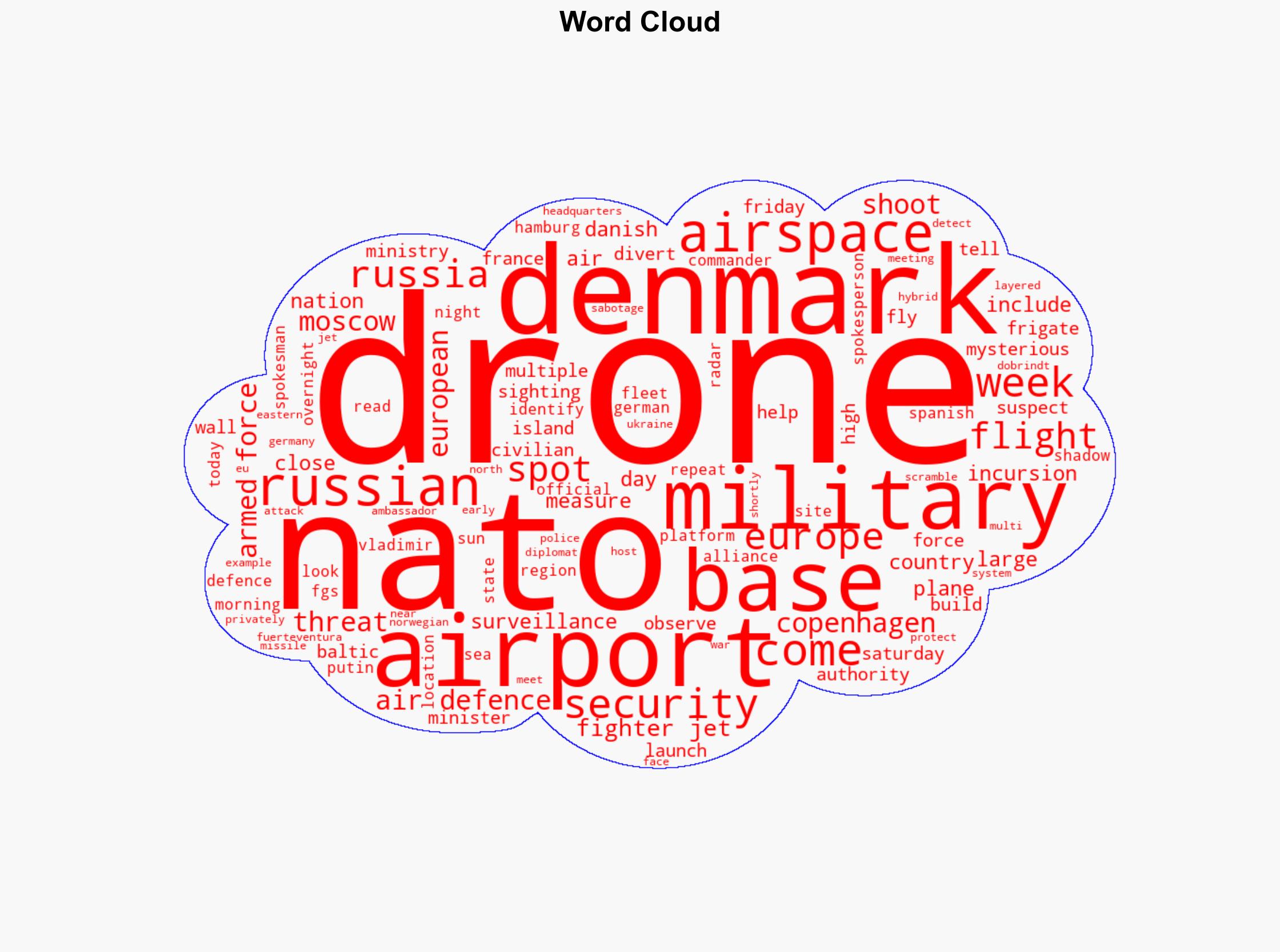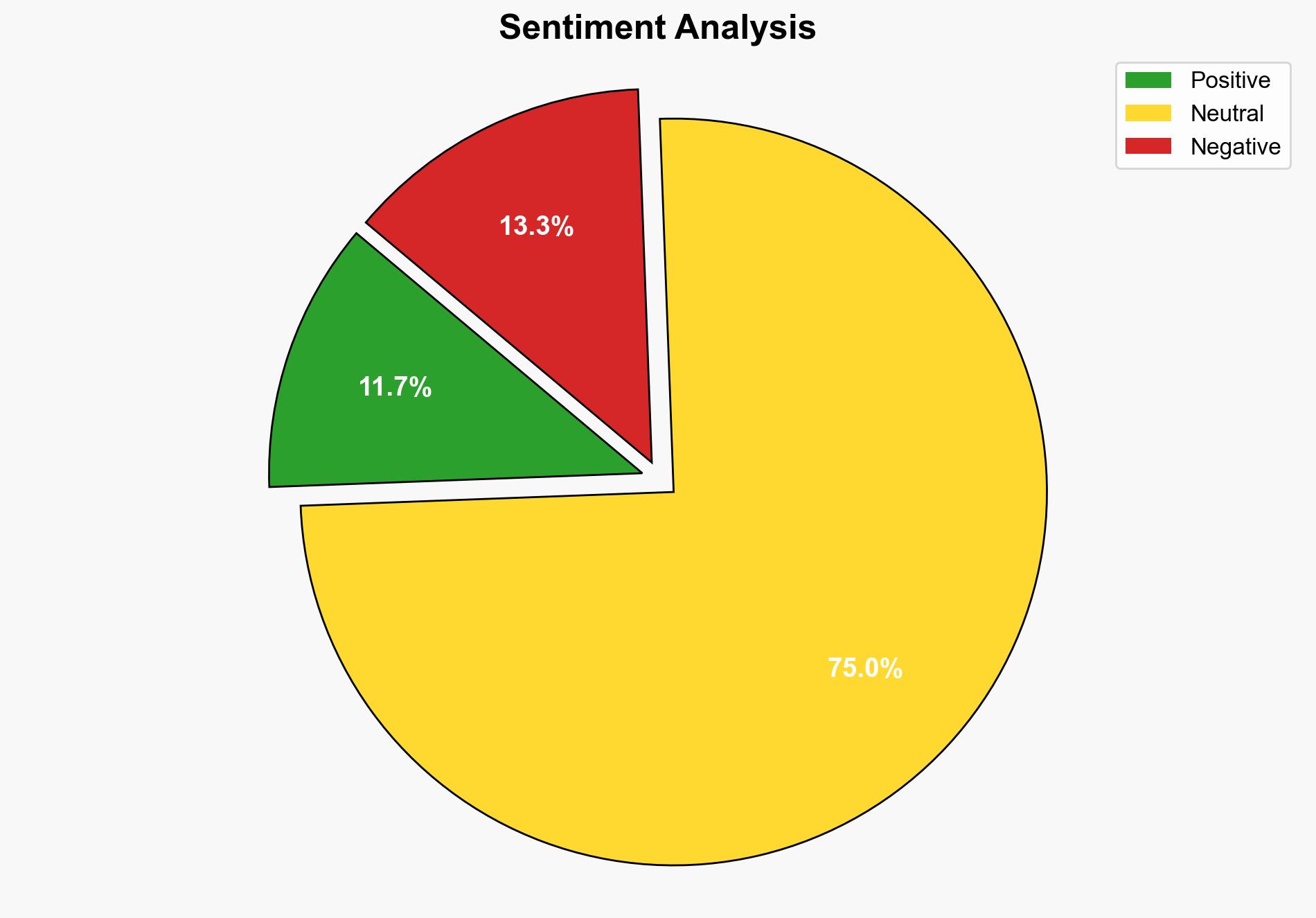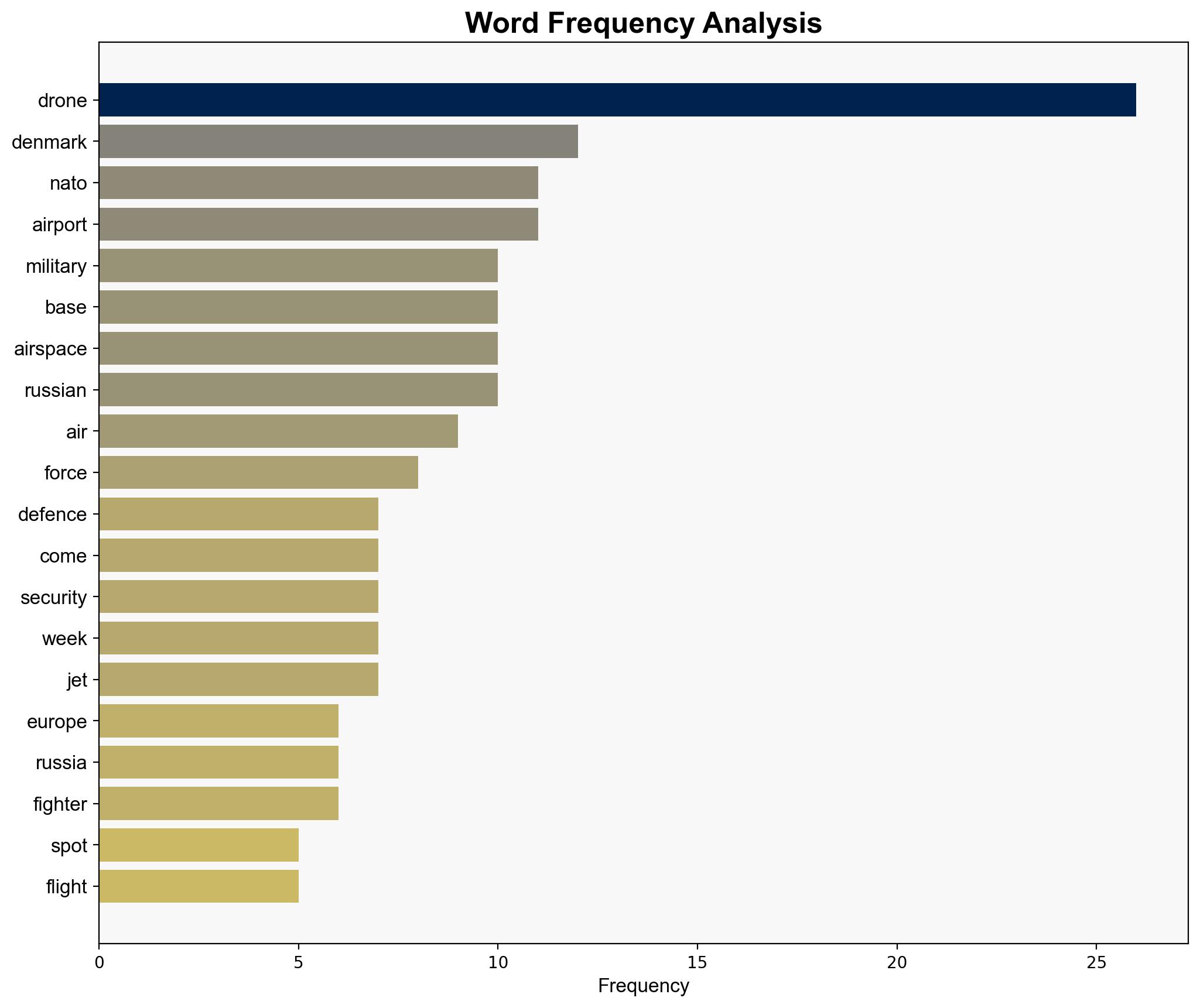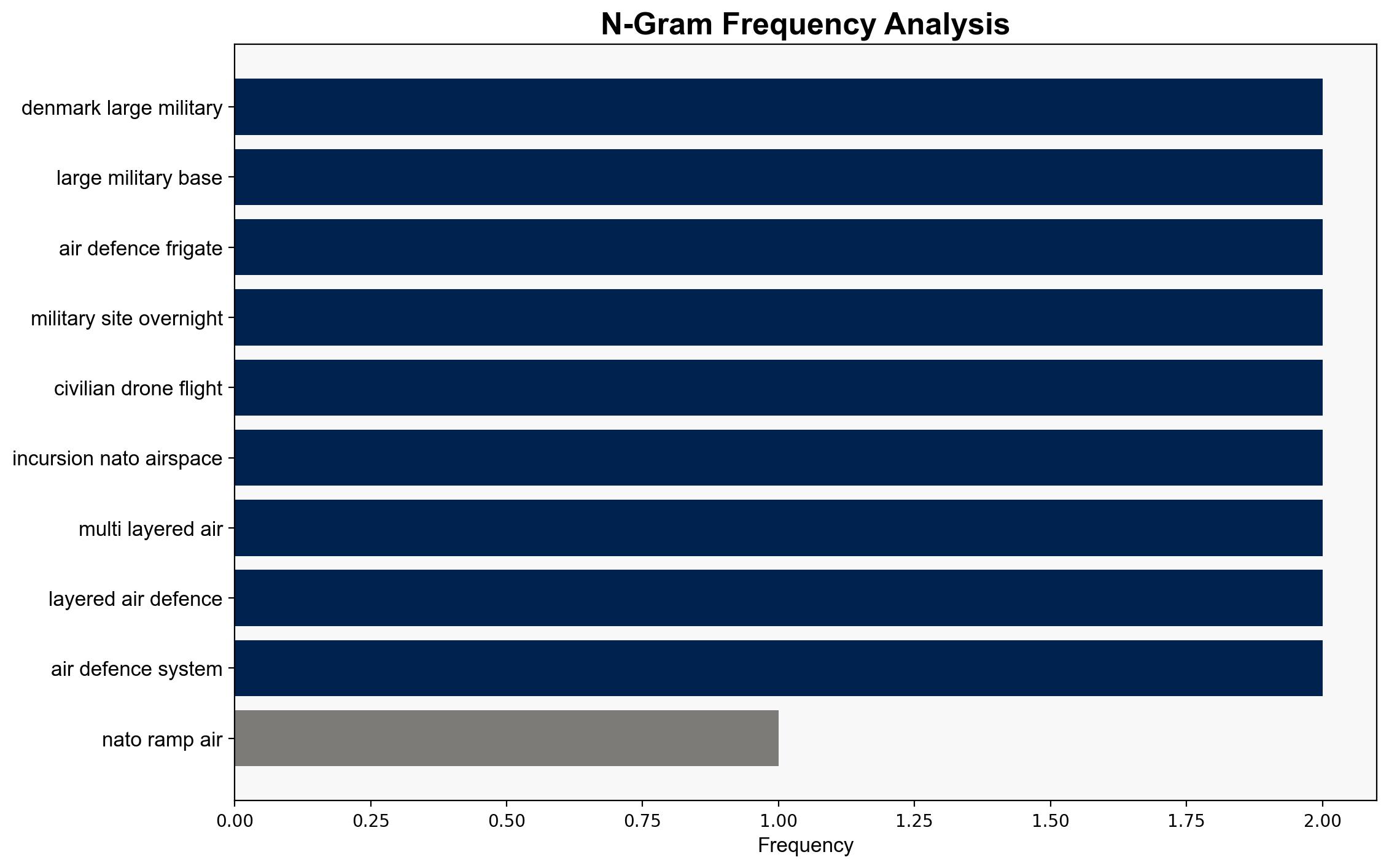Drones buzz more military bases – The-sun.com
Published on: 2025-09-28
Intelligence Report: Drones buzz more military bases – The-sun.com
1. BLUF (Bottom Line Up Front)
The most supported hypothesis is that these drone activities are part of a coordinated intelligence-gathering operation by a state actor, likely Russia, aimed at testing NATO’s air defense capabilities and response times. Confidence in this assessment is moderate due to the lack of direct evidence linking the drones to Russian operations. Recommended action includes enhancing counter-drone measures and increasing intelligence sharing among NATO allies.
2. Competing Hypotheses
1. **Hypothesis A**: The drone incursions are part of a state-sponsored intelligence operation, possibly by Russia, to probe NATO defenses and gather intelligence on military installations.
2. **Hypothesis B**: The drone activities are conducted by non-state actors or hobbyists, potentially for disruptive purposes or as a form of protest against military activities.
Using the Analysis of Competing Hypotheses (ACH) 2.0, Hypothesis A is better supported due to the strategic nature of the targets, the timing of the incursions, and the historical context of Russian activities in the region. Hypothesis B lacks support as the sophistication and coordination required for such operations are beyond typical non-state capabilities.
3. Key Assumptions and Red Flags
– **Assumptions**: It is assumed that the drones are technologically advanced enough to evade detection and that the operators have a strategic interest in military installations.
– **Red Flags**: The absence of direct evidence linking the drones to a specific actor is a significant gap. Additionally, the possibility of deception or false-flag operations should be considered.
– **Blind Spots**: There is limited information on the technological capabilities of the drones and the exact nature of the data they might be collecting.
4. Implications and Strategic Risks
The drone incursions could escalate tensions between NATO and Russia, potentially leading to increased military posturing in the region. There is also a risk of miscalculation or accidental engagement if drones are perceived as a direct threat. Economically, disruptions to civilian air traffic could have broader impacts on regional economies. Psychologically, repeated incursions might undermine public confidence in national security measures.
5. Recommendations and Outlook
- Enhance counter-drone technologies and protocols at military installations and critical infrastructure sites.
- Increase intelligence sharing among NATO allies to better understand and respond to drone threats.
- Scenario Projections:
- **Best Case**: Improved defenses deter future incursions without escalation.
- **Worst Case**: Misidentification of drones leads to military engagement.
- **Most Likely**: Continued drone activity with incremental improvements in detection and response capabilities.
6. Key Individuals and Entities
– Martin Donnell
– Arlo Abrahamson
– Vladimir Putin
7. Thematic Tags
national security threats, cybersecurity, counter-terrorism, regional focus




